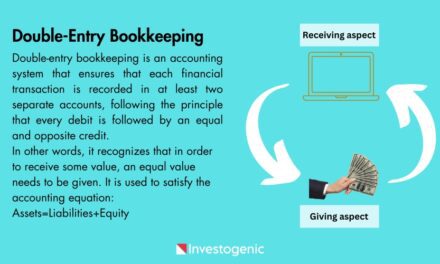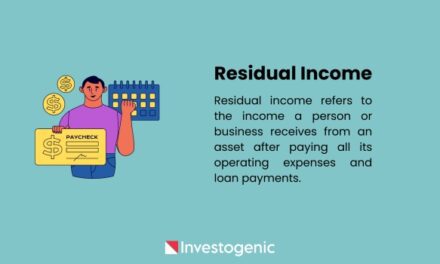
What Is Blockchain, How Does It Work, and How Can It Be Used?

Over the past few years, we have all heard the term ‘blockchain technology’ constantly, mostly in relation to cryptocurrencies like Bitcoin. When it comes to any cryptocurrency, blockchain technology is definitely heard there. For quite some time now, blockchain technology has attracted significant attention due to its potential to revolutionize various industries and processes.
This post is about blockchain technology. If you are new to blockchain, this is the right platform to gain solid fundamentals. In this article, you will learn what blockchain is, how it works, and why it is important.
What is blockchain technology?
Blockchain is a decentralized and distributed digital ledger technology (DLT) that allows participants to record transactions and related data in multiple places at the same time and verify transactions in a secure, transparent, and tamper-resistant manner.
Simply put, blockchain is a record-keeping technology for storing data in a way that makes it difficult or impossible to change, hack, or otherwise misuse the system.
How does blockchain technology work?
Blockchain is also considered a type of database, but it differs significantly from traditional databases in the way it stores and manages information.
Instead of a central computer like a traditional database, blockchain has a decentralized database that is managed by computers connected to a peer-to-peer network. Additionally, instead of storing data in rows, columns, tables, and files like traditional databases, it stores data in blocks that are digitally linked together.
It functions as a series of linked “blocks”, each of which contains a list of transactions. These blocks are cryptographically linked, creating a chain of information. Typically, this storage is called a ‘digital ledger’.
Every transaction in this ledger is authorized by the digital signature of the owner, which authenticates the transaction and protects it from tampering; hence, the information contained in the digital ledger is highly secure.
Types of Blockchain
Public Blockchain
There are primarily three types of blockchains: public, private, and consortium (also known as federated) blockchains. Each type of blockchain has its own characteristics and use cases, which are outlined below.
- Public blockchains are open and permissionless networks that anyone can join and participate in.
- It has played a role in popularizing distributed ledger technology (DLT). With DLT, data is distributed over a peer-to-peer network rather than stored in a single location.
- Public blockchains are decentralized and operate based on a consensus mechanism where participants validate and agree on transactions. It uses a consensus algorithm to verify the authenticity of information; proof of stake (PoS) and proof of work (PoW) are two frequently used consensus methods.
- Examples: Bitcoin and Ethereum.
- Use Cases: Cryptocurrencies, decentralized applications (dApps), and open financial systems.
Private Blockchain
- Private blockchains are restricted networks where only authorized participants have access to the blockchain.
- They are often used within organizations to improve internal processes, but they lack the level of decentralization seen in public blockchains.
- Transactions are validated by a pre-selected group of participants, which might involve a centralized authority.
- Examples: Hyperledger Fabric, Corda.
- Use Cases: supply chain management, enterprise solutions, internal record keeping
Consortium (Federated) Blockchain
- Consortium blockchains are a hybrid between public and private blockchains. This means that consortium blockchains have both public and private components, except that multiple organizations will manage a single consortium blockchain network.
- They are permissioned networks where a group of organizations collaborate to maintain the blockchain.
- Consortium blockchains provide more decentralization compared to private blockchains while maintaining some level of control.
- Examples: Quorum, Hyperledger Besu.
- Use Cases: Industry consortia, where multiple organizations work together while maintaining certain levels of privacy and control.
In addition to these primary types, there are variations and developments within the blockchain space, such as:
Hybrid Blockchains
Hybrid blockchains combine elements of public and private blockchains to achieve a balance between openness and control. In hybrid blockchains, some parts of the blockchain are public and transparent, while others are private and accessible only to authorized and specific participants.
Sidechains
These are separate blockchains that are interoperable with the main blockchain, allowing for specific applications without congealing the main chain.
Permissioned Blockchains
These are private or consortium blockchains where participants require permission to join and participate.
Non-Fungible Token (NFT) Blockchains
These are specialized blockchains used for creating and trading unique digital assets like collectibles, artwork, and virtual real estate.
How Blockchain and Distributed Ledger Technology Record Transactions
- Decentralization: Unlike traditional centralized systems where a single entity controls the data, blockchain operates in a decentralized manner. Multiple participants, known as nodes, maintain and validate the ledger.
- Transaction Validation: When a transaction is initiated, A transaction is initiated when a participant wants to record a piece of information (e.g., a financial transaction, contract, or asset transfer) on the blockchain. It is broadcast to the network. Nodes on the network validate the transaction using consensus mechanisms like proof of work (PoW) or proof of stake (PoS). Transactions can involve transferring ownership, changing states, or executing smart contracts.
Proof of work (PoW): In PoW, nodes compete to solve a complex mathematical puzzle. The first node to solve it adds the block of transactions to the blockchain. This process requires significant computational power and energy.
Proof of stake (PoS): In PoS, validators are chosen based on the amount of cryptocurrency they “stake” or hold. Validators are then responsible for validating and adding new blocks.
- Adding Transactions to Blocks: Once validated, transactions are grouped into a block. Each block contains a reference to the previous block, creating a chain of linked blocks.
- Cryptography: Each block contains a unique cryptographic hash of the previous block’s data, ensuring that altering any data in a block would require changing subsequent blocks, making it highly secure against tampering.
- Consensus Mechanisms: Different blockchain networks use consensus mechanisms to agree on the validity of transactions. PoW and PoS are examples, and they ensure that transactions are agreed upon by the majority of network participants.
- Data Immutability: Once a block is added to the chain, it becomes very difficult to alter or remove any information within it due to the cryptographic links between blocks. This immutability enhances the integrity of the data.
Use Cases for Blockchain:
- Cryptocurrencies: The most well-known application of blockchain is cryptocurrencies like Bitcoin and Ethereum. Blockchain is used to securely record and verify transactions without the need for intermediaries like banks.
- Supply Chain Management: Blockchain can track the movement of goods across the supply chain, providing transparency and ensuring authenticity. It helps prevent counterfeit products and enhances traceability.
- Smart Contracts: Blockchain can host self-executing contracts called smart contracts. These contracts automatically execute predefined actions when specific conditions are met, reducing the need for intermediaries.
- Digital Identity: Blockchain can provide individuals with control over their digital identities, improving privacy and reducing the risk of identity theft.
- Healthcare: Blockchain can securely store and share patient health records across healthcare providers, improving data accuracy and patient care.
- Voting Systems: Blockchain can create transparent and tamper-resistant voting systems, enhancing the security and integrity of elections.
- Financial Services: Blockchain can streamline cross-border payments, improve remittances, and enable real-time settlement of financial transactions.
- Real Estate: Blockchain can simplify property transactions by securely recording ownership and transaction history.
- Intellectual Property: Blockchain can establish proof of ownership and authenticity for digital assets, reducing copyright infringement and piracy.
- Energy and IoT: Blockchain can provide secure communication between Internet of Things (IoT) devices and peer-to-peer energy trade.
Advantage of Blockchain
Blockchain technology offers us many benefits, making it a transformative innovation across various industries. If we look at some of the major benefits of blockchain technology, they are as follows:
- Security: Blockchain technology is known for its strong security features. Transactions are encrypted, and once recorded, they are irreversible. Due to this, it becomes very difficult for hackers to tamper with the data.
- Transparency: Participants in the network can see every transaction that has ever been made on the blockchain. Due to this, the risks of transparency fraud are reduced or virtually nonexistent, as any unauthorized change can be easily identified.
- Decentralization: Blockchain runs on a decentralized network of computers called nodes, compared to conventional centralized systems. This means there’s no single point of control or failure, making it more resilient and censorship-resistant.
- Immutability and trust: Once data is added to the blockchain, it cannot be changed or removed without consensus from the network. This makes immutability particularly useful for maintaining a secure and tamper-resistant ledger. The transparent and immutable nature of blockchain reduces the need for trust between parties. Participants can trust the integrity of the system rather than relying on intermediaries.
- Cost Savings: Eliminating intermediaries, reducing fraud, and automating processes can lead to significant cost savings in various industries, such as finance, supply chain, and healthcare.
Learn more: IPO: What Is It, Its Types, And How To Participate In It
Disadvantage of blockchain
Blockchain technology has the ability to revolutionize and disrupt a variety of industries by providing safe, open, and effective solutions to challenging issues. Even though it has many advantages, it also has drawbacks, including issues with scalability, energy use, regulatory issues, and more. The uses of the technology and their effects will become more obvious as it develops.
- Lack of ownership and regulation: The lack of comprehensive regulation in the blockchain sector has led to uncertainties and legal challenges, especially in areas such as initial coin offerings (ICOs) and cryptocurrency exchanges. With public blockchains, there are also questions about ownership, as it is uncertain who will be responsible if problems arise.
- Loss of Private Keys: Cryptocurrencies and blockchain assets are often secured by private keys. If a user loses their private keys, they may lose access to their assets, and often there is no way to recover these private keys.
- Limited Adoption: Despite its potential, blockchain adoption is still relatively low in many industries. This can lead to issues with network participation, interoperability, and achieving critical mass.
- Storage and Bandwidth Requirements: Running a full node on a blockchain network can require significant storage space and bandwidth, making it less accessible to individuals and small organizations.
- Energy Consumption: Some blockchain networks, especially those that use proof-of-work (PoW) consensus mechanisms like Bitcoin, require significant computational power and energy consumption for mining. This has raised concerns about environmental sustainability.



























